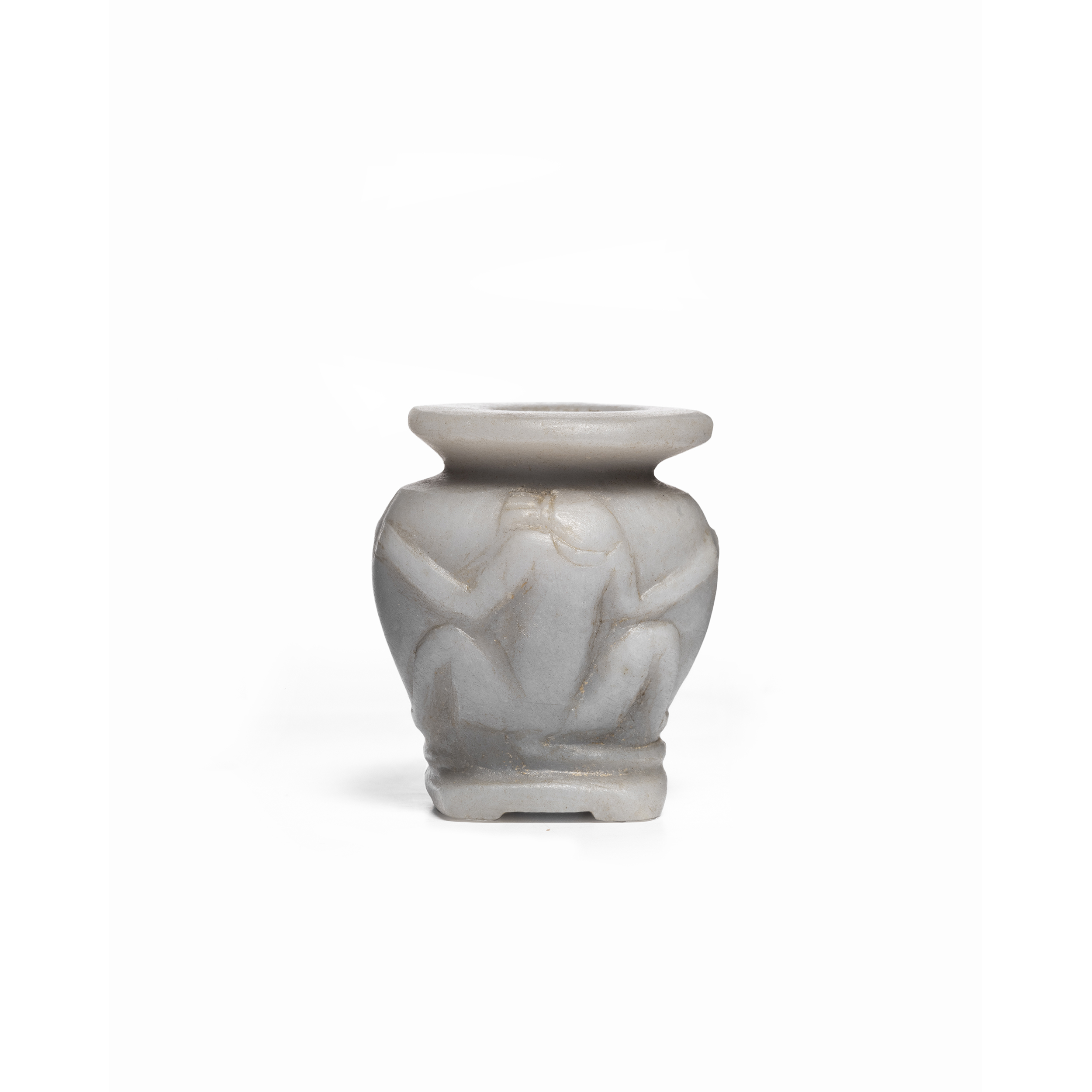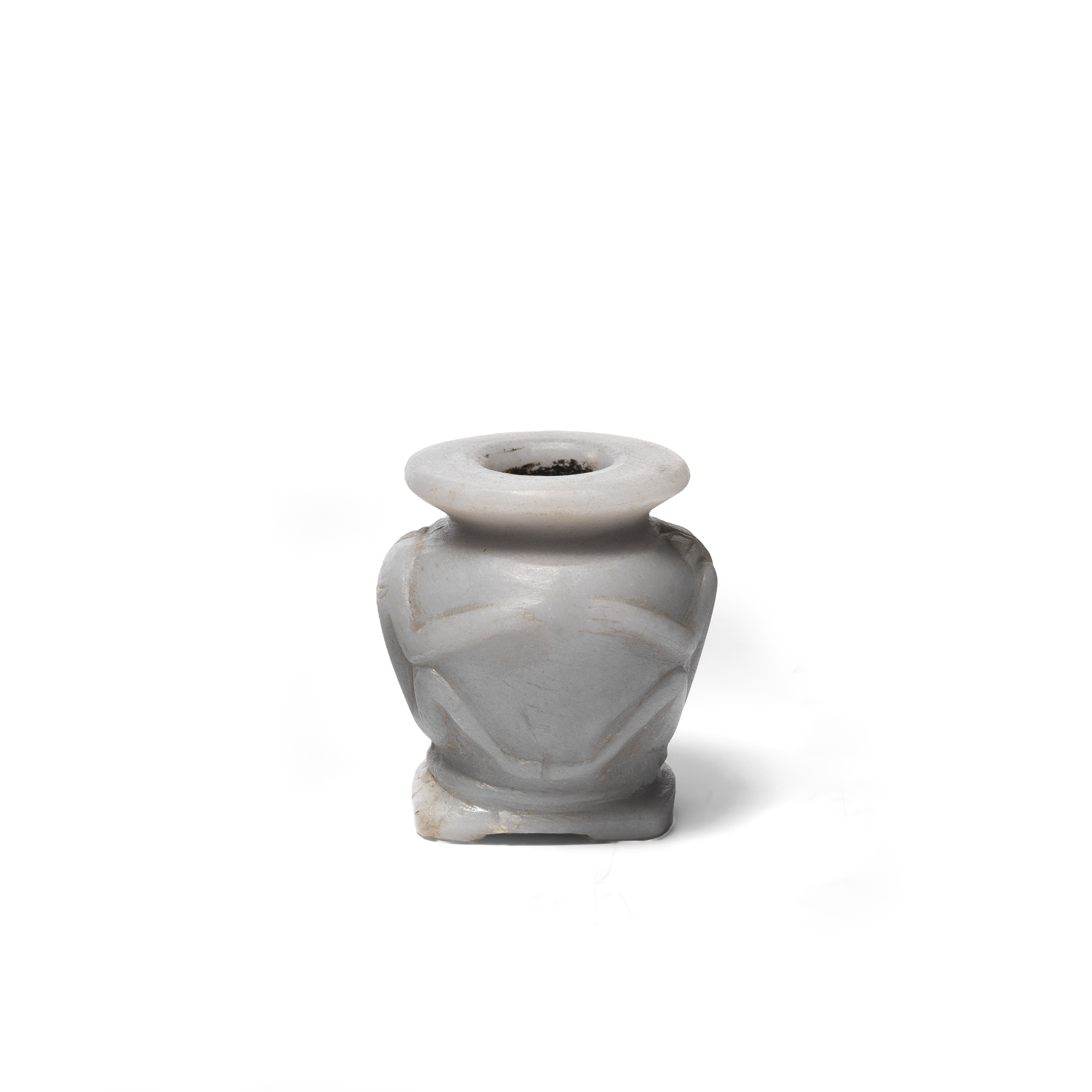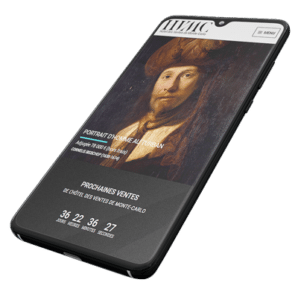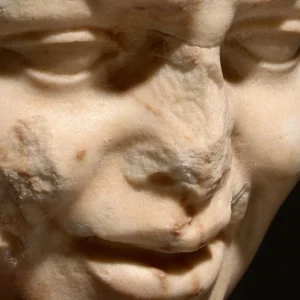Anhydrite; résidu de pigment noir cosmétique à l'intérieur
H. 4,2 cm
Egypte, Moyen-Empire, ca. 1552-1069 av. J.-C.
Exposition
Musée de San Antonio, Texas, 1991-1992
Provenance
Ancienne collection privée anglaise de M. Gawain McKinlay (1945-1996), Royaume-Uni
Pour une typologie similaire
BOURRIAU, J., Pharaohs and Mortals, Egyptian art in the Middle-Kingdom, p.142, n°144 (vase kohl aux singes en anhydrite, XIIe dynastie
Vase en anhydrite décoré de deux singes en relief, voir inv. 30.8.139 au Metropolitan Museum of Art, New York, et un pot de khôl au British Museum, inv. EA20759.
L'anhydrite était un matériau très prisé, souvent utilisé pour les navires de luxe au Moyen-Empire. Le singe était également souvent utilisé comme motif décoratif sur les contenants de cosmétiques. Comme l'explique J. Bourriau dans Pharaohs and Mortals, Egyptian Art in the Middle Kingdom, Cambridge, 1988, p. 142, "Au Moyen Empire, les singes se trouvent presque exclusivement comme décoration sur des bols d'anhydrite et des pots de khôl. Ils apparaissent fréquemment dans les scènes domestiques des reliefs funéraires, montrant qu'ils étaient gardés comme animaux de compagnie, mais ils étaient aussi des symboles érotiques, ce qui pourrait expliquer leur association avec de la peinture pour les yeux et d'autres produits cosmétiques". L'application de cosmétiques avait une connotation sensuelle et érotique pour les Égyptiens.
An Egyptian Middle-Kingdom anhydrite kohl vase, 1552-1069 B.C.
For an anhydrite bowl decorated with two monkeys in relief, see acc. No. 30.8.139 in the Metropolitan Museum of Art, New York, and a kohl jar in the British Museum, acc. No. EA20759. Anhydrite was a highly prized material, often used for luxury vessels in the Middle Kingdom. The monkey was also often used as a decorative motif on cosmetic containers. As J. Bourriau explains in Pharaohs and Mortals, Egyptian Art in the Middle Kingdom, Cambridge, 1988, p. 142, "In the Middle Kingdom, monkeys are found almost exclusively as decoration on anhydrite bowls and kohl pots. They appear frequently in domestic scenes in tomb reliefs, showing that they were kept as pets, but they were also erotic symbols, which might explain their association with eye paint and other cosmetics". The application of cosmetics had a sensual and erotic connotation for the Egyptians.
Description complète








